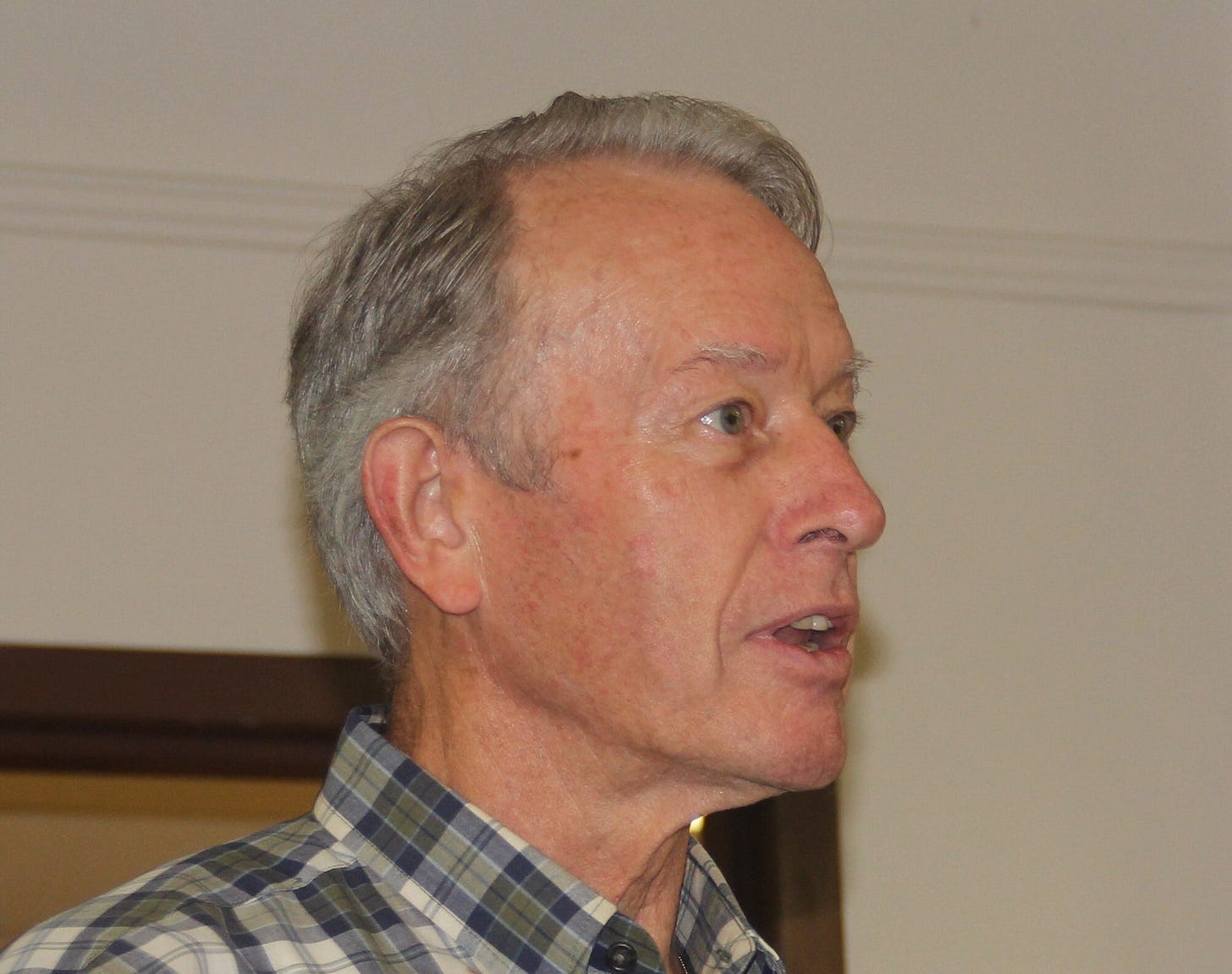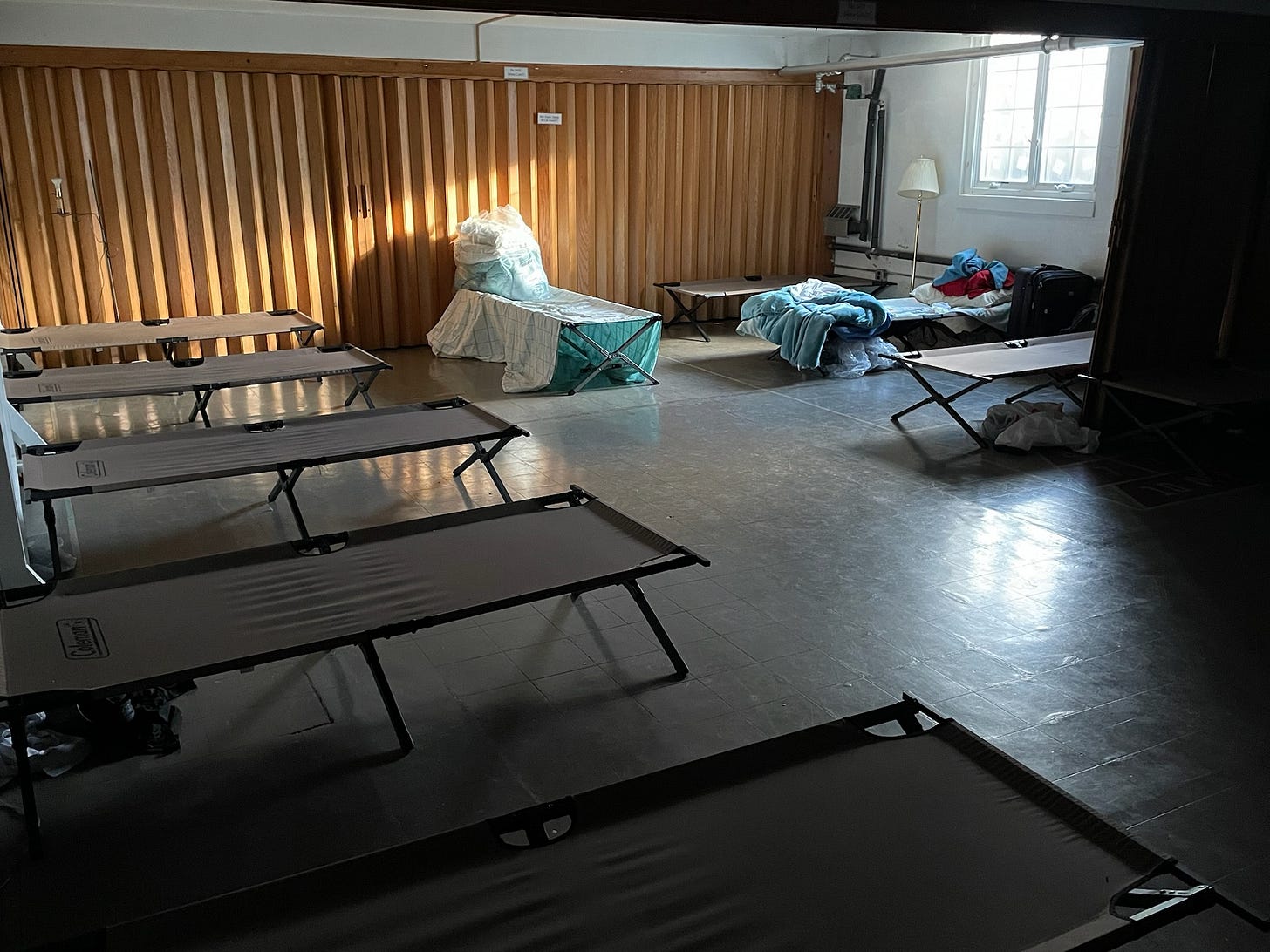Port Jervis Warming Station Attracts More and Aims High
Administrative Director Jack Austin is working with volunteer colleagues on an ambitious year-round plan to guide the unhoused to homes and independence.
Visitors to Port Jervis Warming Station at St. Peter’s Lutheran Church have increased by about 75% from last year, likely drawn not only by the need for warmth but other facets of the center too, according to Jack Austin, administrative director and a founder of the station. A retired social worker, long familiar with social services and how people can benefit from them, he now works on more ambitious plans for the station’s visitors.
“It’s the busiest it’s been in eight years, since the beginning in 2016,” he said. “Ordinarily, the highest number of guests is 15 or 16. Now we have 26 to 28 every night. We get different people. They come from Newburgh, Middletown, New Jersey and Pennsylvania. They like it here. They say we have less stealing and violence, and it’s friendlier. We get more help. Plus we have a shower. Not all do.”
A “meal train” of alternating volunteers brings large aluminum trays of casseroles, stews, salads and other nourishment for warming station guests every night.
The circumstances that bring people to the station are often similar to those in previous years. About half have trouble keeping jobs and homes because of mental health, drug and alcohol issues. Some younger people show up too, whether because of neglectful parenting or other challenges, like pregnancy. Only those 18 and older can stay. But other problems bring people to the center. One person’s apartment burned down, so he works for the post office during the day and comes to the center at night to save money for a new home.
“If people demonstrate they can pay rent, we use donations to help with a security deposit,” Austin said. “But affordability is hard with rents sneaking up.”
Sometimes once a solution is found a mishap topples it. Austin recalled a veteran who often spent nights at the station and then, in December of 2023, found a rental house in Pike County with a friend. But the friend violated parole and was jailed, leaving one person paying bills the two had shared.
“We helped him not become homeless again,” said Austin.

The station also helps with other necessities. They may include waterproof footwear, sleepwear, reading glasses, diabetic test strips, pharmacy co-pays and phone cards for staying in contact with social services and doctors. A woman had been wearing the same clothes night and day, so she was given sleepwear, Austin said.
Some have used the church address to receive information about benefits, such as required appointment times. A man lost benefits because he missed an appointment he didn’t know he had. Sometimes the center gives people a post office box for six months.
However, what the warming station does not offer is a place to spend cold days.
'‘During the daytime, the homeless generally have nowhere to go, nowhere to stay warm, get a meal or obtain services,’’ Austin told Port Jervis Common Council at a recent meeting. “This has become a huge problem for the police, the library and local businesses.”
Austin lamented that the unhoused seeking daytime warmth are often chased out of fast food restaurants and stores. A 74-year-old woman on oxygen often goes to the library or anywhere she can be warm. She blends in by reading a newspaper, Austin said. He and his colleagues are trying to help her find an apartment. Meanwhile, Section 8 housing has a waiting list several years long, although about eight warming station frequenters would be eligible.
“Store managers are tolerant until someone’s behavior gets out of control,” Austin said. “Sometimes visitors vape or drink and police may be called.”
Such incidents were what prompted Austin to request that the Common Council support alternative sites for people during freezing weather.
“I’m asking the City, and perhaps Orange County, to take a leadership role in helping to solve this problem, in identifying possible locations, planning with other non-profits and service providers, and helping to open a daytime shelter, where people can stay warm and possibly find other services,” Austin told the Council. “The Farnum House and Port Jervis Recreation Center are just two places that come to mind, and other non-profits and churches may have space available. There also may be funds to provide paid staff or find volunteers to provide supervision for this center, and other county and private service providers can meet with guests to plan for and provide services.”
The warming station receives $58,000 a year from Orange County, along with donations and volunteer assistance.
As for responses to his request, Austin said, “The mayor (Dominic Cicalese) was positive about hearing an update. I don’t know if he’ll partner with us. He likes hearing how many people we have and updates from (Police Chief) Bill Worden about disputes and scuffles.”
Asked later for his thoughts about Austin’s request, Cicalese said he awaits findings this month from a Point in Time count of the unhoused by Orange County and Port Jervis Police Department.
“After I see results of the survey, I will contact Orange County and see if there can be a course of action,” said Cicalese. “Sadly, homelessness and mental health are issues that have been and continue to grip communities and municipalities. This remains a complex issue across the state of New York. Another issue we have encountered this past year is that some homeless do not want help or services provided to them from Orange County.”
“I don't think we will learn anything different from the survey, from what we already know, that there are many homeless who need shelter during the day, and they need services,” Austin said. “Some individuals who refuse services say this, partly as a symptom of their mental illness. So the mayor should not hesitate to contact Orange County now, to find out what options they might have.”
Austin has talked with Orange County social service officials about the possibility of a daytime program “to help entrenched homeless to be employed, independent and find affordable housing,” he said. “They gave verbal feedback that they’d like to find ways to address homelessness. They want a formal proposal.”
Austin estimates that year round services would cost about $350-400,000 and that such resources could help 20 people a year to find homes and establish independence, which most want, he finds.
Austin and his warming station colleagues, about six people who frequently meet and confer with each other, have not created a “formal entity,” he said. They recently hired a part-time case worker, who meets with people from 8-10 p.m., Monday through Friday, and two mornings a week, 9:30-11:30 a.m.
“Now we’re just a group of volunteers, but we’ll become a nonprofit, Together in Hope, in a couple of months,” Austin said.
Community focused news can only succeed with community support. Please consider the various subscription levels.





Great article- thank-you. My wife and two daughters cook and serve meals once a week. Everyone involved in the program are doing wonderful work. Thanks to all involved.
And thank-you Jessica